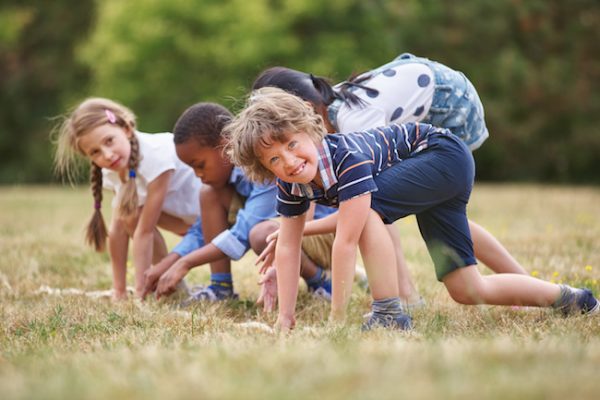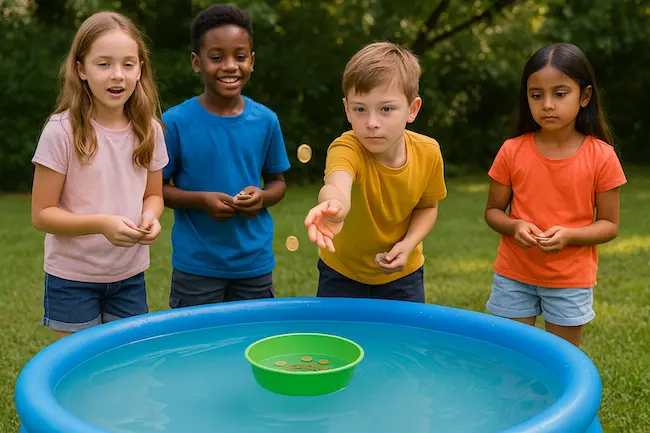Stuck in the Mud is an energetic outdoor tag game for kids that combines teamwork, strategy, and movement. Perfect for birthday parties, recess, or family gatherings, this no-supplies game gets children running, crawling, and laughing in just minutes.
With simple rules and dynamic gameplay, it’s a go-to choice for kids aged 6 and up looking for fun and freedom outside.
How to Play Stuck in the Mud
The game is easy to set up and full of surprises. Here’s how it works:
- Choose one child to be “It” (the tagger), who will chase and tag the others.
- When a player is tagged, they become “stuck” — they must stand still, arms outstretched and legs apart.
- A stuck player can be freed when another child crawls between their legs.
- The game ends when all players are stuck or after a set time limit.
- For the next round, a new player becomes “It.”
This thrilling game gets more intense with each round, keeping kids fully engaged and physically active.
Fuel the fun with our wild and whimsical Wacky Relay race for kids—a team-based, zany challenge full of creative tasks and nonstop laughter!
At a Glance
This quick overview helps you plan your play session:
- Type of game: Outdoor active tag game
- Theme: Classic movement game
- Recommended age: 6 years and up
- Format: No supplies needed
- Play duration: 15 minutes
- Skills developed: Agility, strategy, spatial awareness
A quick setup and pure outdoor fun make this a must-have in your party game rotation. Add a burst of playful energy to your next relay session with the lively Bean Relay Race team challenge for kids, designed to boost teamwork and motor skills through fun and movement.
Why Your Kids Will Love This Game
This high-energy tag game offers more than just outdoor fun:
- Fast-paced excitement: The chase and rescue dynamic keeps the adrenaline going.
- Inclusion for all skill levels: Everyone plays a role—no one is left out.
- Freedom to move: Kids love games that let them run wild with purpose.
Whether they’re the chaser or the one being saved, every child will find their moment to shine. Put your little ones’ minds and legs to the test with the clever Mystery Number Racing Game for Kids — a fun, fast-paced challenge that blends number recall with energetic racing.
Game Variants to Keep Things Fresh
Switch up the rules to keep the game challenging and unpredictable:
- Freeze Tag: Players stay frozen until touched or until someone crawls under their legs.
- Team Chase: Play in teams with multiple taggers and strategize to free teammates.
- Flashlight Tag: For nighttime play, tag using a flashlight beam instead of physical contact.
Each variation introduces new dynamics while keeping the core thrill of the game.
Inject a burst of playful chaos into your next gathering with the exhilarating Balloon Pop Relay Game for kids, a lively team challenge that’s perfect for parties or classroom fun.
Educational Benefits of Stuck in the Mud
This game supports physical and cognitive development in several key ways:
- Motor Skills & Agility: Running and crawling enhance balance and coordination.
- Strategic Thinking: Kids must plan their moves, anticipate danger, and make fast decisions.
- Spatial Awareness: Navigating the space safely sharpens perception and focus.
- Social Skills: Children work together to rescue each other, encouraging empathy and teamwork.
- Rule Following: Respecting turns and staying “stuck” builds discipline and fairness.
- Adaptability: Constant changes in roles and positions keep kids flexible and alert.
By mixing movement with interaction, it turns play into meaningful growth.
Looking for more action-packed fun? Explore our top collection of running games for kids—perfect for building speed, coordination, and outdoor excitement!
Frequently Asked Questions
- Is this game safe for younger kids?
Yes. As long as the area is free of hazards, children as young as 6 can safely enjoy the game with supervision. - Can it be played indoors?
It’s better suited for outdoor play due to the need for space and crawling. If indoors, ensure a large open area without obstacles. - How many players are ideal?
The game works best with 6 to 12 players, but can be adapted for larger groups with multiple taggers. - What if a child doesn’t want to crawl under legs?
You can offer the Freeze Tag variant where tagged players are freed with a touch instead. - How can I make it competitive?
Add time limits, score rounds, or divide into teams for more challenge and structure.
Want printable, ready-made adventures with built-in storytelling and puzzles? Check out our PDF treasure hunt and mystery kits for kids—designed for ages 4–12, perfect for birthdays, family game nights, or classroom fun.






